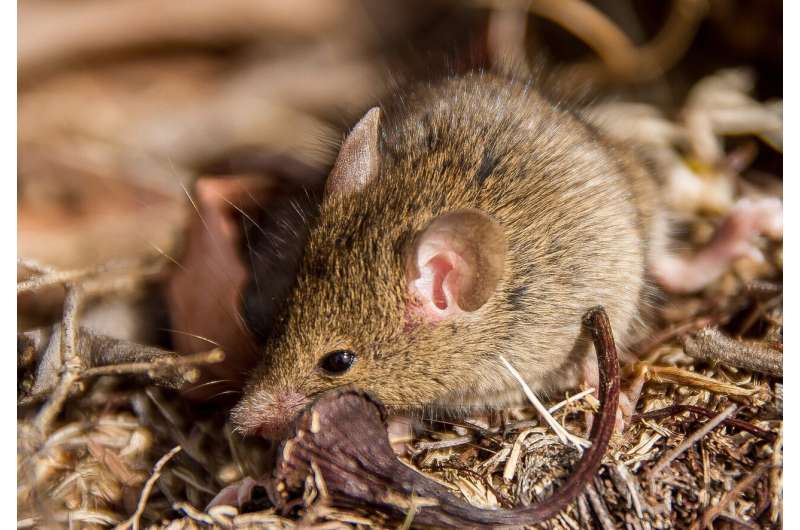Survival of Australian species hinges on working together

When faced with unfavorable environmental conditions, rodent species are likely to form social groups and work cooperatively, according to a new study by researchers at The University of Western Australia.
Dr. Renée Firman from UWA's Centre for Evolutionary Biology said the ability for species to change their behavior has the potential to reduce the severity of stressors associated with rapid adjustments in climatic conditions.
"As our planet's climate becomes hotter, drier and less predictable, the survival of some species may rely entirely on their ability to work together in social groups," Dr. Firman said.
"We are now faced with the challenge of predicting how vulnerable species will cope with the growing severity of climate change.
"This challenge has intensified following the Australian bushfire crisis, which has eliminated entire populations of wildlife and continues to destroy valuable habitat.
"Many species are expected to undergo widespread shifts in their distribution, however for those species with limited capability to disperse, a change in behavior may be the only alternative to extinction."
Dr. Firman worked with a team of researchers from UWA, Columbia University, Macquarie University and Museum Victoria to understand how species in Australia have adapted to naturally harsh environmental conditions over evolutionary time.
"Taking advantage of our continent's large diversity in climatic regions, which includes both deserts and rainforests, we conducted a comparative study on Australia's native rodent species," Dr. Firman said.
"Our research combined the evolutionary relationships among Australian rodent species with documented climate and life-history data to uncover patterns of social evolution based on changes in environmental conditions."
The findings demonstrate that the behavior of species, particularly rodents, evolve to living in groups and displaying cooperation when environmental conditions are arid-like with low rainfall and high temperature variability.
Dr. Firman will continue to work with co-author Associate Professor Dustin Rubenstein from Columbia University to test the findings from their study on the Western Australian Pilbara pebble-mound mouse, a species which works cooperatively in groups to build pebble-mounds above an underground burrow system.
"We believe that pebble-mounds are designed to cool the burrow system, which aids in protecting the mice from the harsh Pilbara environment," Dr. Firman said.
"In the future, our research will aim to investigate if the behavior exhibited by pebble-mound mice is in response to the climatic conditions in the Pilbara region, and establish a link between the environment and the requirement for this species to cooperate."
Provided by University of Western Australia




















